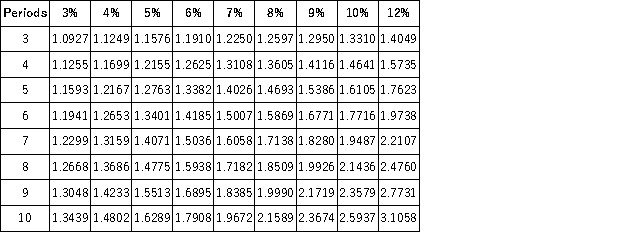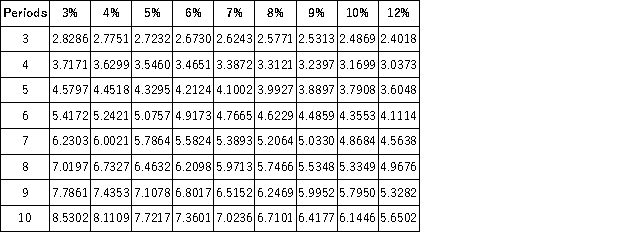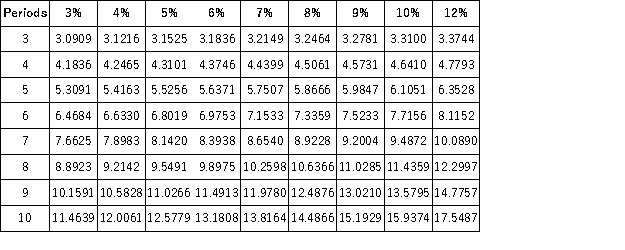Multiple Choice
Present Value of 1  Future Value of 1
Future Value of 1  Present Value of an Annuity of 1
Present Value of an Annuity of 1  Future Value of an Annuity of 1
Future Value of an Annuity of 1  If we want to know the value of present-day assets at a future date, we can use:
If we want to know the value of present-day assets at a future date, we can use:
Definitions:
Related Questions
Q1: Which of the following is NOT one
Q15: Profit margin is net sales divided by
Q57: The accountant of Action Adventure Games, Inc.
Q65: A company that is a controlling investor
Q99: Mesner's and Sanchez's company is organized as
Q103: Mace and Bowen are partners and share
Q127: The following information is available on PDC
Q138: Draft Co. purchased 14,000 shares of Hamburg
Q173: On January 3, Kostansas Corporation purchased 5,000
Q191: Select the correct statement from the following:<br>A)Profit